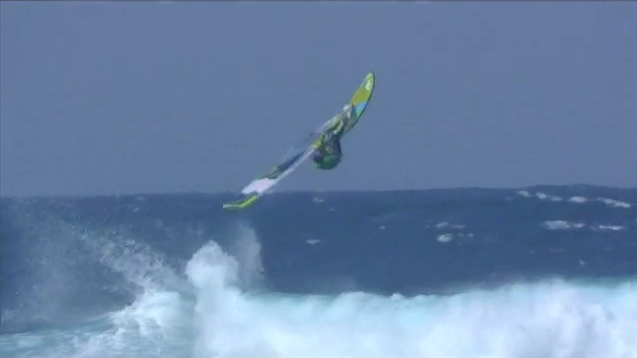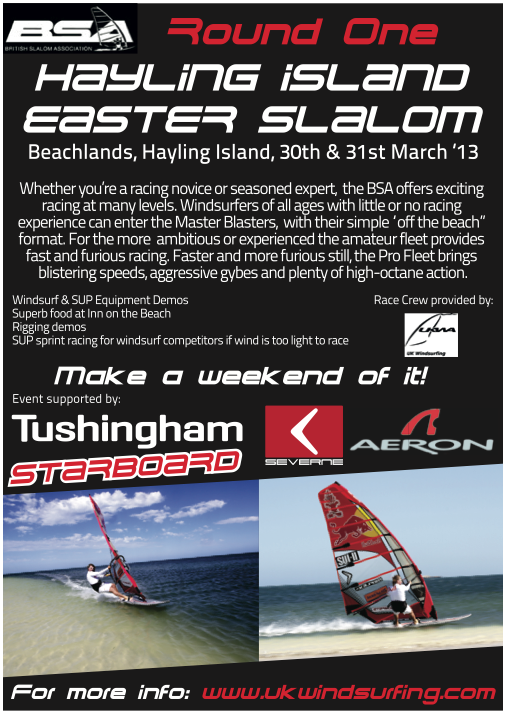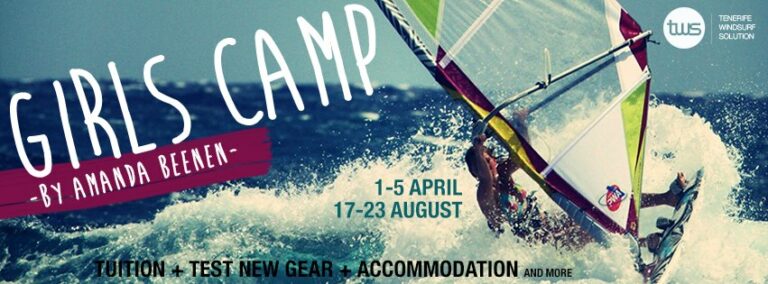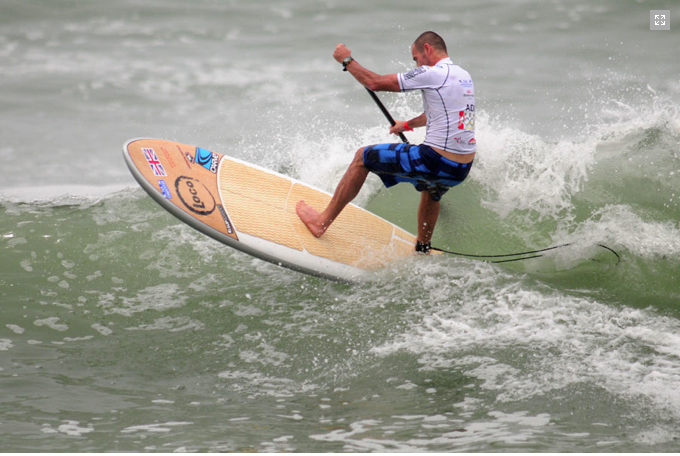Boards is joined by some of the UK’s top freestylers to guide you through the wonderful world of freestyle, from starting out, how and why you should get involved, through to equipment and taking on your first competition.
First of all we look at what moves to start out with, whether to go carving or aerial and the next moves to progress onto.

How can I get started in freestyle? What move would you advise I try first?
ANDY CHAMBERS: The first thing you need to do is get yourself on a freestyle board. This will make a huge difference when learning new moves. They are designed to give you lots of pop and rotate easily, also the footstrap positions are inboard which keeps you on top of the board, this is important for all freestyle. If you have the wrong board or equipment set up it would be like trying to drive a bus around a rally course!

The first move to learn is the actual pop itself, as you need to be able to pop into all freestyle moves. Once you have mastered the pop so you can do it without thinking about it then it will open up a whole heap of moves to learn. The vulcan is usually the first but as well as that you can try grubbies, flakas and forward loops in the beginning. Don’t just get stuck on trying to learn one move.
PHIL RICHARDS: Just go out and have fun, for me freestyle is all about pushing yourself further in your abilities but it’s important to just try new stuff and make it enjoyable. It really helps to have some friends to get into it with.
I would recommend trying vulcans as they’re a good move to learn first of all and lead easily into others. I also suggest learning to loop, it’s easier than it looks and conquering this move will give you lots of confidence in your windsurfing.
It’s really important to keep improving all your skills, for example if you want to improve your freestyle, start nailing those heli tacks, up wind 360’s and other non-aerial freestyle as it will help massively with understanding the moves and make you a far better sailor.
DANIELLE LUCAS: Get out on the water and try new stuff, whether you start with a body drag, duck gybe, upwind 360 or straight in to a vulcan; the best way to get into it is just to go out and try something new! If you want to learn aerial tricks such as spocks, flakas and switch moves, learn the upwind 360 on both tacks and nail it, then once you get the jump and slide the end of the move, which is often an upwind 360 should be easy!
MAX ROWE: Have a good look around the internet for some inspiration or a video of something you’d like to learn. The vulcan is the first step for aerial freestyle but you don’t have to start there, even messing around on a big board in light winds is great practice for freestyle moves.
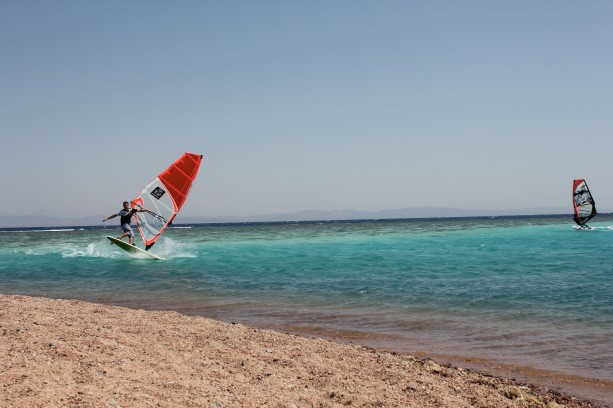
JOHN PALMER: The best thing about freestyle is you can start anywhere, in any wind conditions. The first freestyle moves I learnt were body drags and heli tacks. I think heli tacks are a great place to start because they start you learning the skills you need for loads of moves – flakas, punetas, skopus, anything with a slidey upwind 360 bit in it.
ADAM SIMS: Most people will say to get on a wide board with a small sail and start spinning in light winds, but if you are already planing then yeh for sure do this also but just start chop hopping and then pick a move you like from the following and go for it (try it on both sides): vulcan, flaka, shuv-it or forward loop.
Also, if you are really serious about freestyle then I would suggest practicing the sail duck from the very early stages, basically when you are on that wide board with the small sail in light winds. On top of that the UK freestyle circuit is a great place to meet like minded freestylers and you learn a lot at each event, I still do and I’ve done a few of them now!
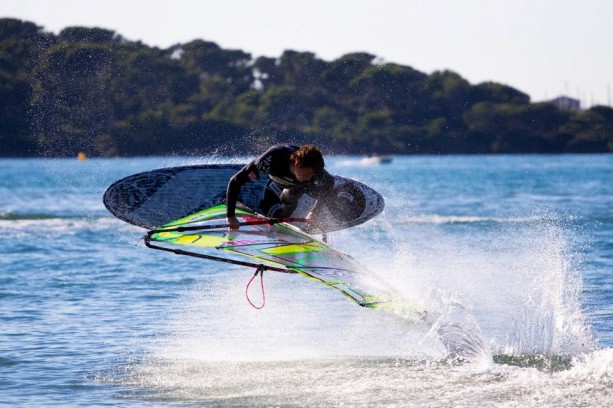
JO WRIGHT: I think if you have been windsurfing for a while, it’s important to see freestyle windsurfing as a new, achievable challenge that will help you improve all aspects of your windsurfing. My best tip for getting started, would be to sail around others who are freestyling, whether that be going on an overseas holiday, or heading down to popular freestyle spots such as Poole, Weymouth, Hayling etc. Ask other people for help and advice, set yourself achievable goals and remember falling is learning! Also, never forget the skills that can be learnt from going out in light-winds on a big board and small sail. Nailing heli-tacks, upwind 360’s, sailing switch stance, sailing clew first and many other moves will play dividends when trying to learn freestyle moves in strong winds.
For me, once I become a competent ‘freerider’ e.g. blasting up and down water-starting and carve gybing. I felt that my first freestyle move was learning to duck gybe; this gave me the confidence to try more ‘old school’ moves including the body drag, downwind 360’s and heli-tacks. Aerial moves had always looked to scary for me to try, but on a trip out to Dahab, seeing a variety of people going for vulcans and with the support of other windsurfers around me. I finally mustered up the courage to start trying vulcans and quickly realised they do not result in death! From there found my freestyle windsurfing really started to improve. Try whatever you feel comfortable with and build from there!
COLIN DIXON: Getting started….you already have! Freestyle is anything from sailing one handed to a chop hop, body drag or a forward loop, right up to a flaka. The vulcan opens the doors to new school sliding freestyle once you believe that it can happen (sliding), then its all becomes easy after that – remember keep your head over the mast foot!
Is it better to start with the old school or carving moves, or can I go straight onto trying aerial stuff?
ANDY CHAMBERS: I don’t think the old school carving moves help too much for the new aerial freestyle, except maybe for the Upwind 360. Instead, I think it’s better to train some lightwind freestyle moves as this will give you more rig control for the planing freestyle moves. As soon as it’s windy then start learning the aerial stuff!
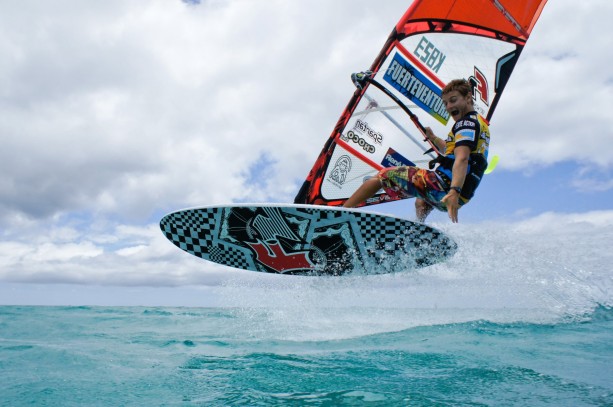
PHIL RICHARDS: You can go straight in to the aerial stuff, but like I said above learning the non-aerial moves will help you progress and give you a better understanding of the moves.
DANIELLE LUCAS: As I said above you could go either way. Carving tricks can seem less daunting and they feel great to learn, so may be a good place to start, but there are no rules. Skills overlap though from carving tricks to aerial tricks and so it’s definitely worth learning both. It’s also really worth learning moves on both tacks!
MAX ROWE: Personally I jumped straight in at the deep end and started learning aerial manoeuvres, coming from a skateboarding background made that a lot easier. Carving moves didn’t interest me at all back then but they are great fun and a really good way to build up confidence and learn skills that will help you with aerial moves later on.
JOHN PALMER: I think start with what you want to learn, or what you feel confident learning. At the start I’d been watching Harty’s ‘Turn for the Better’ and wanted to learn heli tacks and vulcans. I didn’t think I was good enough for vulcans so went with easier moves for a while until a few mates and I decided we wanted to learn them. There are some people (tend to be the freestyle kids) that can vulcan, spock and everything before they can tack, so it really is down to the individual.
ADAM SIMS: Aerial, that really is what freestyle is about so why not start when you can. If you are not at the point of wanting to take off then yeh try carving for a bit and keep working on those chop hops.
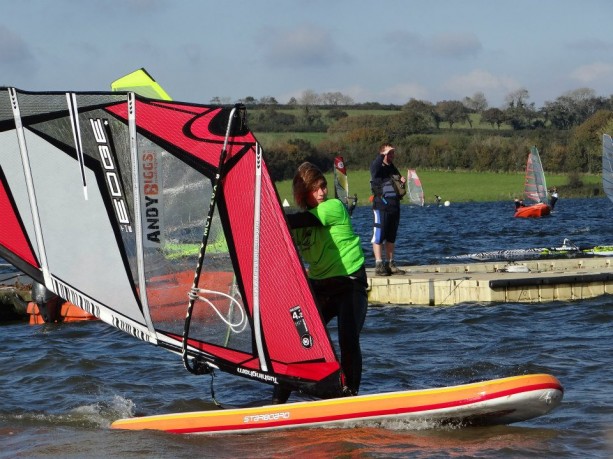
JO WRIGHT: There is no harm with trying a few old school moves to build confidence (and lets not forget they look very cool!) and then from there learning the vulcan will provide the key to the rest of the freestyle windsurfing world. In between all that, don’t forget to head out in light winds too!
COLIN DIXON: It’s your call really, some kids just learn to vulcan before they can gybe; what I would say is try everything, do not get stuck in a rut, everyone does that!! Keep trying everything and what ever feels more natural go for it!!! Don’t give up; if a move is making you mad then have a break, go for a sail and do stuff you can do, that will remind you what windsurfing is all about. Then, when you’re feeling refreshed go back to it.
I’ve got to grips with vulcans, spocks and that kind of thing, what’s the next move you would recommend I learn?
ANDY CHAMBERS: To be honest whatever moves that you can watch and see other people doing that you can understand in your head are usually the easiest ones to start learning.
The first switch move I learnt was a switch one handed flaka; I guess this was becuase I could already do normal flakas and when I was sailing along switch stance it felt like the more natual and easiest thing to try. Switch stance moves open up a whole new variety of the moves you can already do.
Also, try small variations on the normal stance moves like one handed or ducking the sail at the end (diablo/cana brava). Another big piece of advice is make sure you learn the moves on both sides, don’t be a one side wonder!
PHIL RICHARDS: Try some flakas, grubbies, some clew first vulcans and spocks and dabble in some switch stance moves like e-sliders and clew first puneta (switch spock).
If you can vulcan and spock make sure you learn it on both tacks (this is much easier to do as you are just getting in to freestyle and not set in your ways). Plus if you can’t already, learn to loop!
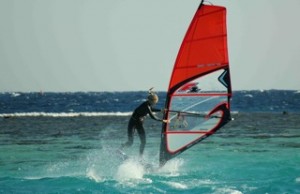
DANIELLE LUCAS: The forward loop is always a crowd pleaser! It really depends where you are learning and your learning style, but people usually go for flakas and switch-stance moves after the vulcans and spocks, most have been trying them at the same time as the spocks. It can really vary depending on confidence levels too!
MAX ROWE: I think it’s really important to learn the grubby and flaka as these will open the door to switch stance moves. If you jump straight into switch moves from here you’ll be missing some really important skills that will make your life a lot easier.
JOHN PALMER: Start learning to shaka! They are a cool move and feel awesome. Probably a good time to start learning to duck the rig too for konos as it’s tough to learn.
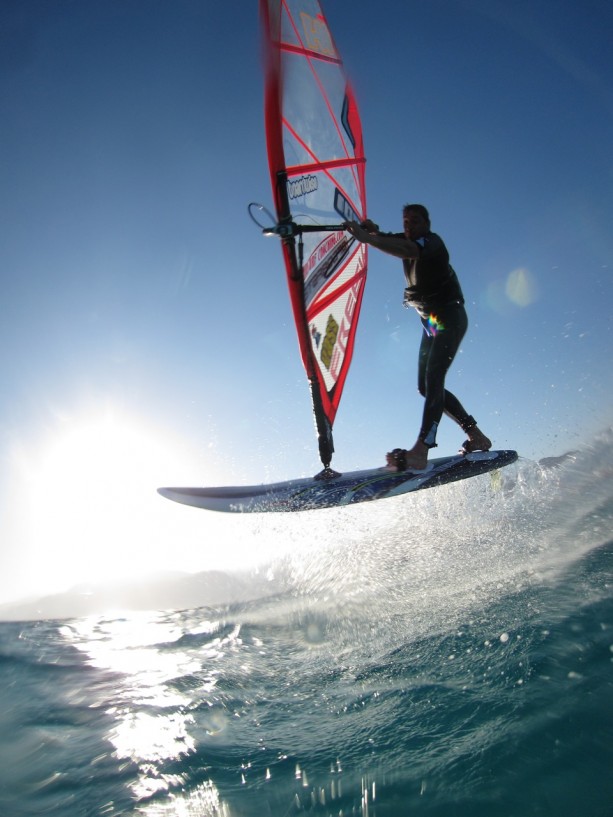
ADAM SIMS: Shuv-its and forwards, they are probably two of my favourite moves but also a move that I’ve been doing the longest. If you are passed that then try switch and then looking at ducking the sail for switch konos or air funnels.
JO WRIGHT: Variations such as spock 540’s, one-handed spocks then I guess grubbies, flakas etc.
COLIN DIXON: Go switch! People can get put off doing this; the hardest part is to learn to keep your speed when in switch. Once you have mastered this and the popping, or should I say catapulting, and can then land sliding normal stance will feel so much easier!
Check out more in the Boards technique section here and coming up in the next part of freestyle secrets we look at equipment advice and strategies for learning new moves.

